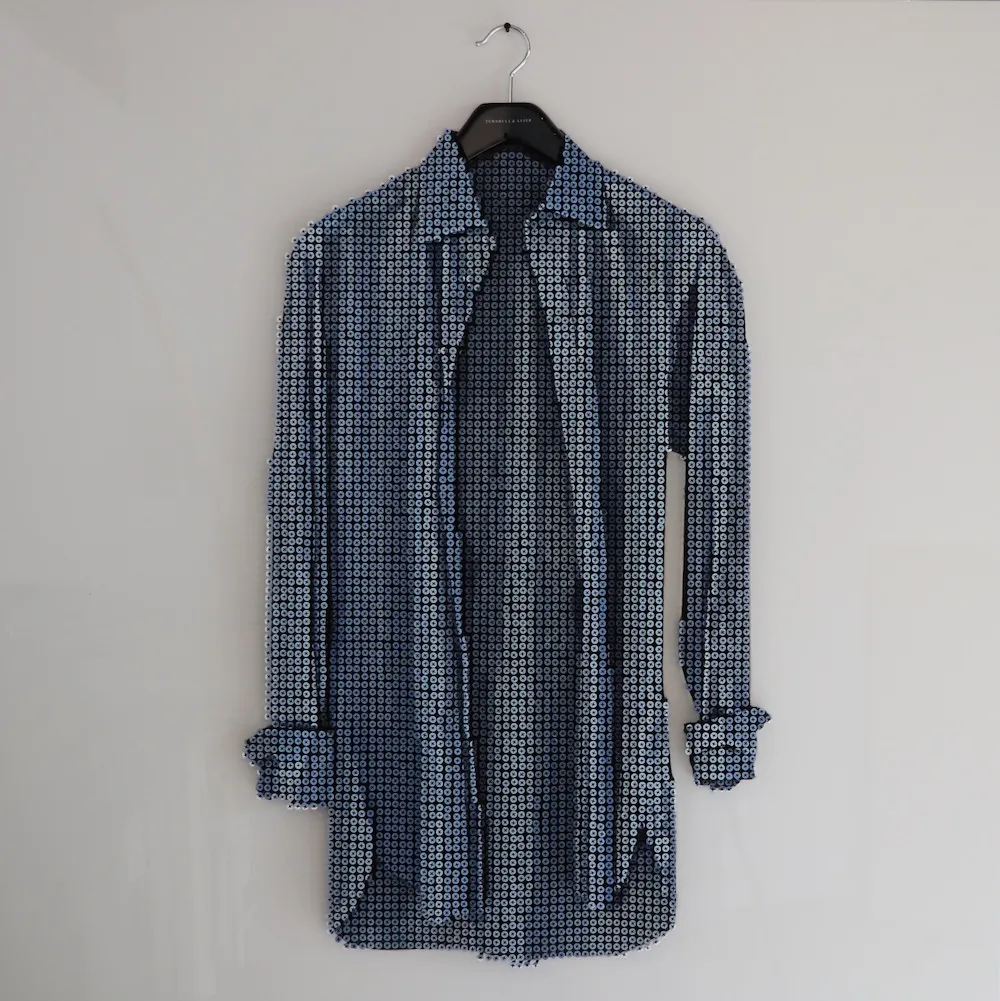Please Touch the Art: This Artist Creates Tactile Portraits for the Blind
Andrew Myers uses screws to make 3-D masterpieces for curious fingers
While many artists consider pencils and paper to be their essential tools, Andrew Myers prefers his electric screwdriver. For the past several years, the California-based artist has been drilling thousands of screws into pieces of plywood and painting them to make 3-D masterpieces that can be appreciated by both blind and sighted people.
Myers began making what he calls “screw paintings” a few years after graduating from the Laguna College of Art and Design. Up until then he had been making bronze sculptors, but he knew he hit the proverbial nail on the head after witnessing a blind man being led around by a friend who was describing one of his creations at an art show. Arms outstretched, the man ran his fingertips across the piece. In a short documentary film produced by his art dealer, Cantor Fine Art, an art gallery in West Hollywood, California, Myers describes the incredible moment when he witnessed “a blind man who could almost see for a second.”
“Seeing the man smile, it was one of those visceral smiles that comes straight from your stomach,” Myers tells Smithsonian.com. “As an artist, it’s my goal to make people feel something, and the emotional aspect [of this experience] stuck with me.”
Inspired, Myers switched his focus to screw paintings full time, and with the help of his dealer, Larry Cantor, and his son, Sam Cantor, Myers connected with George Wurtzel, a woodworker and craftsman who happens to be blind. Working from a photo, Myers created a portrait of Wurtzel, which he later presented to him at Enchanted Hills Camp, a retreat for the blind in Napa Valley where Wurtzel is the construction manager. Wurtzel’s experience is captured as part of the documentary. In one clip, Wurtzel’s growing excitement becomes apparent as he traces his fingers across the custom portrait. The poignant moment takes a humorous turn when he jokes, “My nose is not that big!”
Since the film’s release, custom orders for Myers’ work have been coming in from as far as Turkey. At any given time, Myers can be working on a half-dozen paintings, and it typically takes him two to three months to complete each one. The lengthy process begins with sketching out each portrait onto plywood and then drilling pilot holes in a grid pattern to serve as a roadmap. Eventually he inserts thousands of screws into the wood at various lengths to give the finished piece the natural contours of the human face.
“I always start out at the highest point, which is typically the nose,” Myers says. “Those screws stick out the farthest. Then I figure out where the brow, cheekbones, chin, and corners of the mouth should be and use those as points of reference. From there I just connect the dots.”
He finishes each piece by swiping different colors of oil paint on the head of each screw.
“When I first started making these, I wasn’t painting them, and I knew something was missing,” he says. “It looked like one of those pin toys [where you press your hand and it leaves an impression] that we played with as kids. The finished pieces looked unfinished; it was disappointing.”
Today Myers sells his work on his website and also through Cantor Fine Art, which is currently hosting a show called Please Touch the Art, which features some of his pieces and will be on display now through August 31.
“When people first see one of my screw paintings from a distance, they don’t know what to make of it,” he says. “They can’t figure out what it’s made of, so it draws them in. I think just about everyone has put in a screw at some point in their lives, which helps them relate to my artwork.”
Planning Your Next Trip?
Explore great travel deals
Smithsonian magazine participates in affiliate link advertising programs. If you purchase an item through these links, we receive a commission.
/https://tf-cmsv2-smithsonianmag-media.s3.amazonaws.com/filer/f3/74/f3745f46-1112-4ed1-8d15-70407a93a4b4/hires_ben_piece.jpg)

/https://tf-cmsv2-smithsonianmag-media.s3.amazonaws.com/filer/8a/90/8a900fa0-3828-49f7-ae99-521285b8754a/img_1541.jpg)
/https://tf-cmsv2-smithsonianmag-media.s3.amazonaws.com/filer/03/b9/03b9cf0b-9084-41ce-8101-6b83ed02ff79/screwart_11897.jpg)
/https://tf-cmsv2-smithsonianmag-media.s3.amazonaws.com/filer/0c/05/0c0586b3-dcea-400d-9fb2-794333939838/red_balloon.jpg)